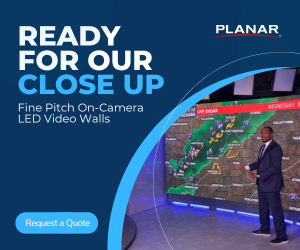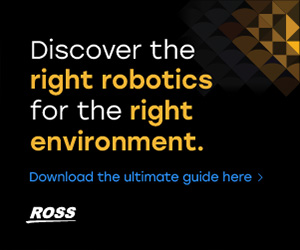NextGen TV brings advanced formats to broadcast television

Subscribe to NCS for the latest news, project case studies and product announcements in broadcast technology, creative design and engineering delivered to your inbox.
NextGen TV deployment continues to expand across the United States, with broadcasters implementing new formats and technologies that deliver improved viewing experiences.
These technical enhancements modernize traditional broadcast capabilities as the industry adapts to changing viewer expectations.
HDR implementation enhances on-air quality
High Dynamic Range (HDR) implementation will be one of the most noticeable changes to consumers with the NextGen TV rollout, providing improved contrast and color reproduction compared to Standard Dynamic Range (SDR) broadcasts.
“HDR is one of the most desirable features of NextGen TV, and the best return on investment with the deeper color experience provided by Wide Color Gamut,” said Suzana Brady, SVP of Worldwide Sales and Marketing for Cobalt Digital.
Gray Media has piloted HDR broadcasts with selected sporting events, previewing what’s to come. In 2024, Gray’s WAVE 3 in Louisville trialed HDR with Dolby Vision and enhanced audio via Dolby Atmos for the Kentucky Derby on NBC.
“It started last spring … with the obvious observation that you need to provide a better product for consumers to become excited,” said Rob Folliard, SVP of government relations and distribution at Gray Media. “So we thought, well, let’s get our NBC affiliate in Louisville, Kentucky, which was the flagship home of the Kentucky Derby to upgrade and upmap to HDR.”
“So you have the surround sound, the extra immersive audio, along with the HDR video product to make a superior experience,” added Folliard.
“We partnered with a consumer electronics retailer to do a TV giveaway. We promoted it in our newscast. We promoted it on-the-air in general. And we saw a ton of NextGen TV sets sell in Louisville during the couple of weeks that we were running that promotion in advance of the Kentucky Derby,” said Folliard.
Following the Derby’s success, Gray has been strategically implementing HDR and Atmos across more affiliates, focusing initially on NBC stations before the Olympics, and then expanding to CBS and Fox affiliates during football season to enhance NFL playoff broadcasts and Super Bowl coverage.
“Nothing moves TV sales like football,” noted Folliard. “We want to give the best possible picture and sound for football fans.”
Pearl TV, which coordinates NextGen TV development across multiple broadcast groups, has been expanding HDR capabilities.
“We’re delivering HDR now to over 80 million households,” said Anne Schelle, managing director of Pearl TV. “Our latest is to enable HDR 10 plus for many devices that use that format.”
Technical implementation options vary, according to Cobalt Digital.
“For basic static conversion Cobalt offers real-time 3D-LUT support, and you can use pre-defined LUTs from NBCU and BBC, or your own. For a more advanced dynamic conversion, Cobalt’s 9904-UDX signal processor integrated with AHDR technology can analyze the content scene-by-scene and optimize the conversion process,” Brady said.
While many current NextGen TV deployments utilize 1080p resolution with HDR, the standard includes technical specifications for 4K Ultra HD.
Implementation typically begins with enhancing existing HD signals.
“The simplest path to ATSC 3.0 includes leveraging an existing workflow to upconvert 1080i or 720p SDR signal to 1080p HDR,” Brady said.
Next generation audio capabilities
The audio specifications for NextGen TV include support for immersive sound formats and enhanced features.
“Next Generation Audio (NGA) gives listeners a personalized audio experience, putting them right in the middle of what’s happening,” said Costa Nikols, executive-team strategy advisor for media & entertainment at Telos Alliance. “With dialogue enhancement, every word is clear, so viewers don’t have to rewind, and won’t miss out on important parts.”
Dolby Atmos implementation provides channel information beyond traditional surround sound, creating a more immersive experience for viewers. Gray’s implementation of Dolby Atmos for the Kentucky Derby showcased how these audio enhancements can elevate sports broadcasts, surrounding viewers with the sounds of the crowd and race.
Device compatibility for these formats is increasing, noted Nikols.
“Based on over three billion devices sold that support Dolby Atmos, I’d say that there is both an awareness and a pent-up demand among consumers,” said Nikols.
“NGA lets viewers control their experience, offering commentary and audio track options tailored to what they like,” noted Nikols on the audio customization available beyond spatial audio.
Enhanced accessibility and multilingual support
The increased bandwidth and flexibility of ATSC 3.0 enables improved accessibility features while supporting multiple languages for diverse audiences.
“Next Generation Audio dialogue enhancement fundamentally delivers clearer dialogue to all viewers,” said Nikols. “Additionally, NGA allows descriptive audio to be provided in multiple languages, which can then be converted into text for more inclusive captions.”
The standard supports multiple language tracks simultaneously, addressing growing demands for multilingual content.
“The FCC has already pushed out a proposed rulemaking on multilingual in Wireless Emergency Alerts, requiring 13 languages across the nation with user selectability,” said Ed Czarnecki of Digital Alert Systems. “If the FCC wants a multilingual EAS capability, that would best happen through ATSC and the ability to handle multiple audio tracks, including emergency audio tracks.”
This capability extends to emergency information, a critical public safety function.
“We can make that text and audio available in multiple tracks, selected by the customer,” Czarnecki added.
Visual accessibility is also improved with NextGen TV.
“New advanced features such as American Sign Language services powered by avatar technology means emergency alerting becomes more accessible,” said Mary Crebassa, VP of major accounts at LTN.
Format adoption and viewer experience
With NextGen TV stations now covering approximately 76% of U.S. households, according to Pearl TV data, the focus is shifting from deployment to enhancing content with advanced formats. The combination of HDR video, immersive audio and interactive features represents broadcast television’s response to changing viewer expectations shaped by streaming platforms.
“It’s taking the best content, which is on broadcast, and marrying it with the best technology,” said Folliard. “And I think if you put that together, that is a very powerful combination.”
Major sporting events like the Olympics, NFL games, and upcoming international competitions like the 2026 World Cup will continue to serve as showcases for these advanced formats, driving consumer awareness and adoption.
Schelle believes the industry is approaching an inflection point for consumer recognition of NextGen TV features.
“It takes typically five years to understand any type of new technology. We’re kind of coming up to that, but we only turned on the big markets just at the beginning of last year,” said Schelle.
As more mid-tier and affordable television models incorporate NextGen TV capabilities, and as broadcasters continue promoting format enhancements through high-profile events, the viewing experience gap between traditional broadcast and streaming platforms is gradually narrowing – all while maintaining broadcasting’s core strength of free, widely accessible content.
“Broadcast without a doubt has the most popular and the best content that’s out there,” Folliard emphasized. “What we’ve missed is we don’t have the usability features, the easy features that streaming offers. And that’s what NextGen is going to give us.”
Subscribe to NCS for the latest news, project case studies and product announcements in broadcast technology, creative design and engineering delivered to your inbox.






tags
Anne Schelle, ATSC, Cobalt Digital, Costa Nikols, Digital Alert Systems, Dolby Atmos, Dolby Vision, Ed Czarnecki, Gray Media, Gray Television, hdr, High Dynamic Range, LTN, Mary Crebassa, multil, NextGen TV ATSC 3.0, Pearl TV, Rob Folliard, Suzana Brady, Telos Alliance, UHD, wave
categories
4K, HDR and UHD Broadcasting, Broadcast Engineering, Heroes, NextGen TV